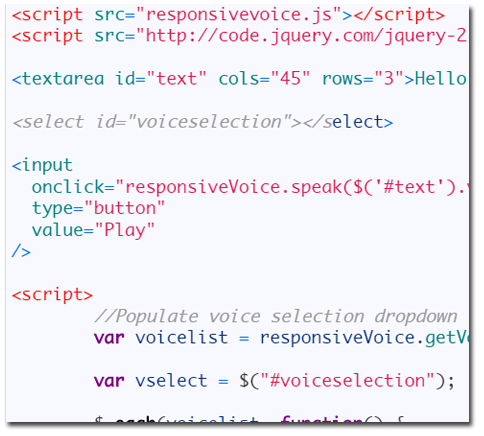

The code for the polyfill can be found here. Any web app using this polyfill would be able to provide a consistent voice-enabled user experience across all browsers, using an API that the developer has chosen, can configure, and can trust. The good news is that there exists a polyfill for the Web Speech API that uses Speechly’s speech recognition service under the hood. Indeed, it can be replicated on browsers that don't support it in the first place.Ĭode that implements missing browser functionality like this is called a polyfill. The Web Speech API can be replicated by building code on top of these APIs, escaping the vendor lock-in imposed by the browser's native choice of speech recognition service. There are more widely supported browser standards like the Media Streams API that can enable developers to stream audio data from a microphone to any service. The solutionīrowsers do not have to be limited to using the speech recognition services owned by Google and Apple. Such restrictions widen the feature gap between browsers like Chrome and the rest of the field. An example is Brave, a browser based on Chromium, which is unable to use Google's speech recognition service due to restrictions imposed by Google. Owning the browser and the speech recognition service also gives these companies the power to make arbitrary changes to the API, including turning it off, as well as lock out other browser vendors. They may assume that the transcription algorithm runs on the device when it is in fact performed in the cloud. Developers using the API probably don't realise that they are sending their users' voice data to a service owned by a big tech company like Google. Implementations across browsers are upgraded in a different cadence and something that worked previously in one browser might not work in the next upgrade.
#Iphone text to speech api how to
A typical point of contention is how to format units, dates, numbers, times, etc. A word that is recognised correctly may still be formatted differently.A word may be transcribed incorrectly in different ways.


A word may be transcribed correctly by some implementations and incorrectly by others.For example, these are some ways different implementations of the API could yield different results: Indeed, even amongst the browsers that do offer the API, the speech-to-text algorithm differs between them, resulting in different transcriptions and different user experiences between browsers. One example is Duolingo, which only offers its voice exercises on Chrome. Firstly, web apps that use this API have a fragmented experience across browsers. Apple has recently joined Google in offering a Siri-based equivalent in Safari.
#Iphone text to speech api free
Indeed, the only browsers that do support it are owned by big tech companies that have the scale to afford to include a free speech-to-text service. At the time of writing, the majority of its support is centralised in browsers made by Google, who authored much of the API's specification. However, browser support for this API is limited. At first glance, it seems to open the door to voice-enabled web apps. Its simple API can turn on the device's microphone and apply a speech-to-text algorithm to convert whatever the user says into text that the web app can process.

The Web Speech API is an experimental browser standard that enables web developers to effortlessly process voice input from their users.


 0 kommentar(er)
0 kommentar(er)
